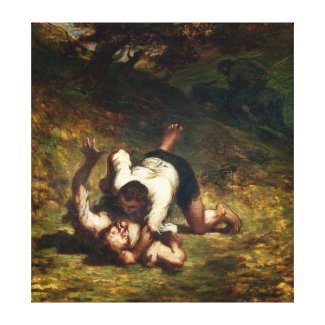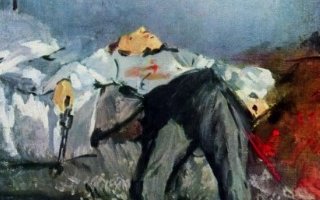The Murdered Traveler
by WILLIAM CULLEN BRYANT (1794-1878)
When spring, to woods and wastes around,
Brought bloom and joy again,
The murdered traveller’s bones were found,
Far down a narrow glen.
The fragrant birch, above him, hung
Her tassels in the sky;
And many a vernal blossom sprung,
And nodded careless by.
The red-bird warbled, as he wrought
His hanging nest o’erhead,
And fearless, near the fatal spot,
Her young the partridge led.
But there was weeping far away,
And gentle eyes, for him,
With watching many an anxious day,
Were sorrowful and dim.
They little knew, who loved him so,
The fearful death he met,
When shouting o’er the desert snow,
Unarmed, and hard beset;—
Nor how, when round the frosty pole
The northern dawn was red,
The mountain wolf and wild-cat stole
To banquet on the dead ;—
Nor how, when strangers found his bones,
They dressed the hasty bier,
And marked his grave with nameless stones,
Unmoistened by a tear.

Ironically, while William Cullen Bryant was a prolific poet, his early work, Thanatopsis, remains his most well-known poem. Nevertheless, he is often grouped with “The Fireside Poets” (also called the “schoolroom” or “household” poets), Henry Wadsworth Longfellow, John Greenleaf Whittier, Oliver Wendell Holmes and James Russell Lowell. They were the first group of American poets to rival British poets in popularity. Their works were generally easy to read, memorize and recite in school and ‘by the fireside’ at home and often carried inspiring messages or told historical tales. |
William Cullen Bryant Contemporaries
Henry Wadsworth Longfellow
Harriet Beecher Stowe
Thomas Hood
Justinus Kerner




Recent Comments